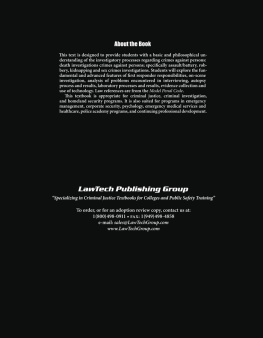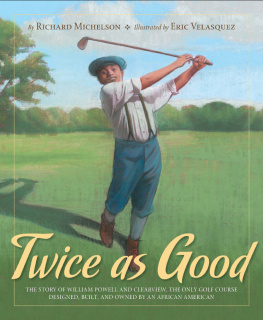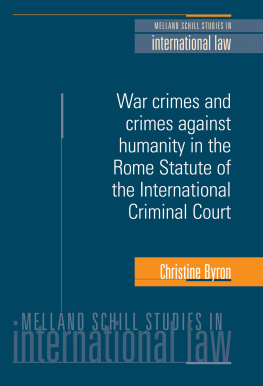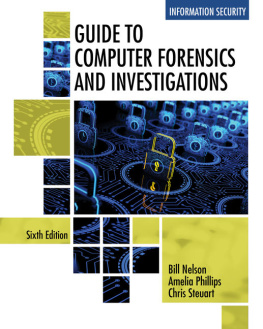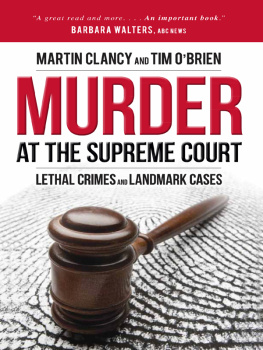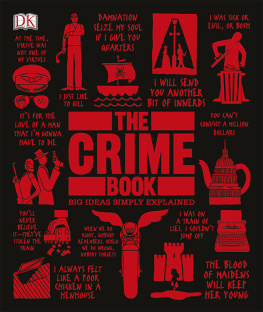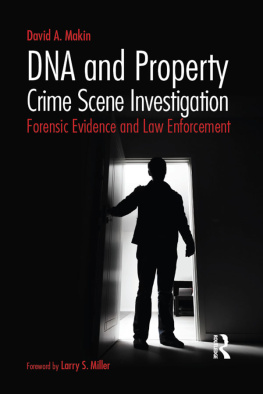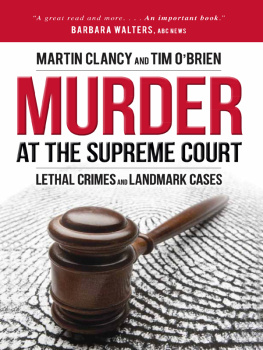

Introduction To Criminal InvestigationConcepts And Applications
Copyright 20052015 by Richard Michelson, MPA
All rights reserved.
This copyright covers materials written expressly for this volume by the editor/s as well as the compilation itself. It does not cover the individual selections herein that first appeared elsewhere. Permission to reprint these has been obtained by LawTech Publishing Group for this edition only. Further reproduction by any means, electronic or mechanical, including photocopying and recording, or by any information storage or retrieval system, must be arranged with the individual copyright holders noted.
All trademarks, service marks, registered trademarks, and registered service marks are the property of their respective owners and are used herein for identification purposes only.
Printed in the United States of America.
v.05.08.15
LawTech Publishing Group
1060 Calle Cordillera, Ste. 105
San Clemente, CA 92673
1(800) 498-0911 | Fax: 1(949) 498-4858
Email:
www.LawTechGroup.com
Cover and book design, layout, and typesetting by The McNaughton Group
www.mcnaughtongroup.com
ISBN 978-1-933778-96-9
EISBN 978-1-933778-97-6
ABOUT THE AUTHOR
Richard (Rick) Michelson, MPA, has served in law enforcement for nearly thirty years, starting with the San Diego Police Department. His experience includes being a SWAT sergeant, community relations officer and director of the Crime Prevention program. He has also been a Lieutenant and an Acting Chief with other agencies. A published author, he also teaches both at the community college level and the graduate level. He specializes in helping agencies and candidates prepare for the challenges of supervisory and management positions by using assessment center methods. His article, Preparing Future Leaders for Tomorrow: Succession Planning for Police Leadership, was published in Police Chief Magazine. He has presented papers to the International Congress on Assessment Center Methods, the International DACUM conference and other professional organizations.
CONTENTS AT A GLANCE
CONTENTS
FIGURES
CHAPTER 1
Introduction to Criminal Investigation
OVERVIEW
On a hot summer day in an ancient Chinese village, two farmers, one older and one much younger, backs bent to the broiling sun, were knee-deep in the dirty brown water of the rice paddy. Who knows what led to the unfortunate event of that daythe murder of the young farmer. Perhaps the younger man taunted the other one about his wife, snickering as he peppered the old man with insults about her virtue (or lack of it). Perhaps then, finally hearing enough and unable to tolerate the young mans taunts any longer, the old man suddenly slashed out a backhanded blow with his razor-sharp sickle, the bill-hooked blade cutting through the young farmer with only a sigh of air as it struck home, killing him.
Whatever prompted the murder; the old man was tormented and anguished over what he had done. He told no one the truth of what happened. Instead, he fabricated a story of bandits attacking them in the field, saying that he had run away and did not know what happened to the young man.
The family of the missing man went looking for him, hoping to find him alive. Sadly, they came across his body, lying face down in the rice paddy. When they pulled him up, his neck rolled loosely in a very unnatural way. He had been nearly decapitated with a single blow from a very sharp instrument.
The village elder sent for the local prefect who was the nearest thing to a death investigator. Upon his arrival, the entire village was questioned about the incident. No one came forward; everyone, including the old farmer, claimed they had heard and seen nothing. After hours of fruitless questioning, the investigator came up with an idea. Since this was after all, a farming village, and since the rice was in the process of being harvested, he had all of the farmers bring their billhooked sickles to one spot and lay them out before the crowd.
As they all stood in a large circle, wondering what the prefect was hoping to accomplish by having them lay all the sickles out on the ground in the heat of the day, they began to question if he was in his right mind. Before long though, a single fly was heard buzzing around the sickles. Within a matter of minutes, there were several flies, and then a swarm, all hovering around the circle. To the astonishment of everyone, the flies all landed on one sickle in particularthe one belonging to the old farmerhaving been drawn there by the scent of the fresh blood that still remained. The prefect, with his arms folded, nodded sagely. The killer broke down into sobs and immediately confessed. The crime had been solved. The bystanders were speechless, sighing with admiration, wrote Sun Tzu.
OBJECTIVES
After reading the chapter, the student should be able to:
1.Differentiate between crimes against persons from crimes against property
2.Identify the value of thorough investigations
3.Research statistics for local, state and federal figures on crimes against persons
4.Evaluate the need for educational and preventative measures for victims of crimes
WASHING AWAY OF WRONGS
T he story about the flies and the sickle is perhaps one of the earliest recorded examples of criminal investigation, entitled the Washing Away of Wrongs. While there are some discrepancies as to author, title and date, (most sources attribute the date to 1248,) he was most likely a Chinese death investigator named Sung Tzu. Published in China, it is perhaps the first recorded application of medico-criminal entomology used to solve a crime.
Ever since one man stole food, livestock, cheated, or injured or killed another man other than in the heat of battle, the process of figuring out the age-old questions of who did it and why has been a constant theme throughout history. The development of criminal investigations has a rich and interesting story that dates back literally to the beginning of mankind. The blend of history and the development of laws and policing are true partners in the story and one cannot be independent of the others. Even the development of civilization has a dark side, and this has always been the bane of man. Holding people accountable for their actions requires that one be able to prove their culpability or blameworthiness. As time has progressed, the easier it has become to do this. Although scientific advancements have clearly revolutionized forensics, it is still the basics at the crime scene that will often determine whether or not a case is successfully resolved. Consequently, realizing that the key to solving the crime requires focusing on the clues left behind at the crime scene is just as important today as it was when a Chinese investigator had the local farmers bring out their sickles after a bloody murder.
This text is primarily an overview of the variety of crimes that occur that either are injurious to another person or are a loss of the property of another. A crime against a person generally means that there is some personal contact with the victim, such as in assault, battery, rape or homicide. Crimes against property include such crimes as theft, burglary, fraud, embezzlement, etc. There is always a human element when we refer to the cost of crime, since in each case, someone suffered some loss, injury or trauma. All crimes must have a suspect, a perpetrator, or offender, and a victim. The crime generally occurs against the wishes of the victim, with rare exception, such as extortion, and some harm is incurred, either physical, emotional or loss of property.
Next page
